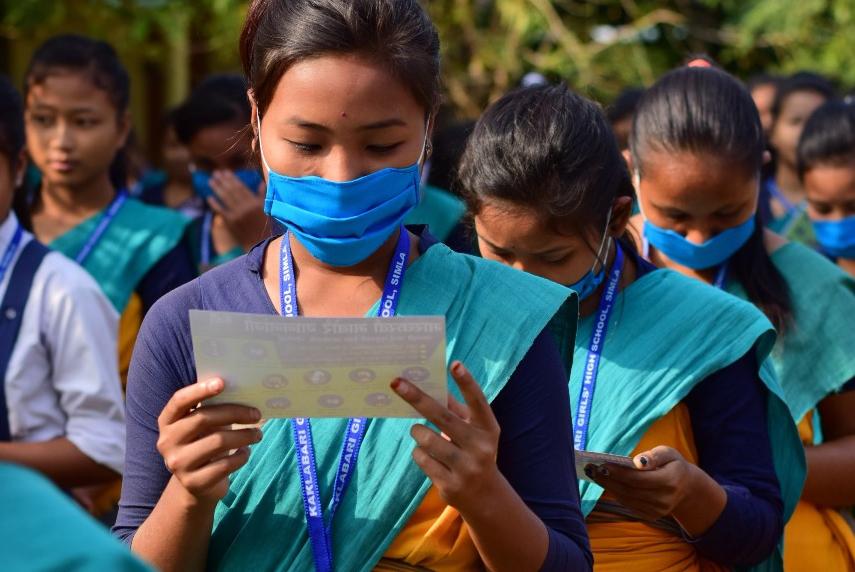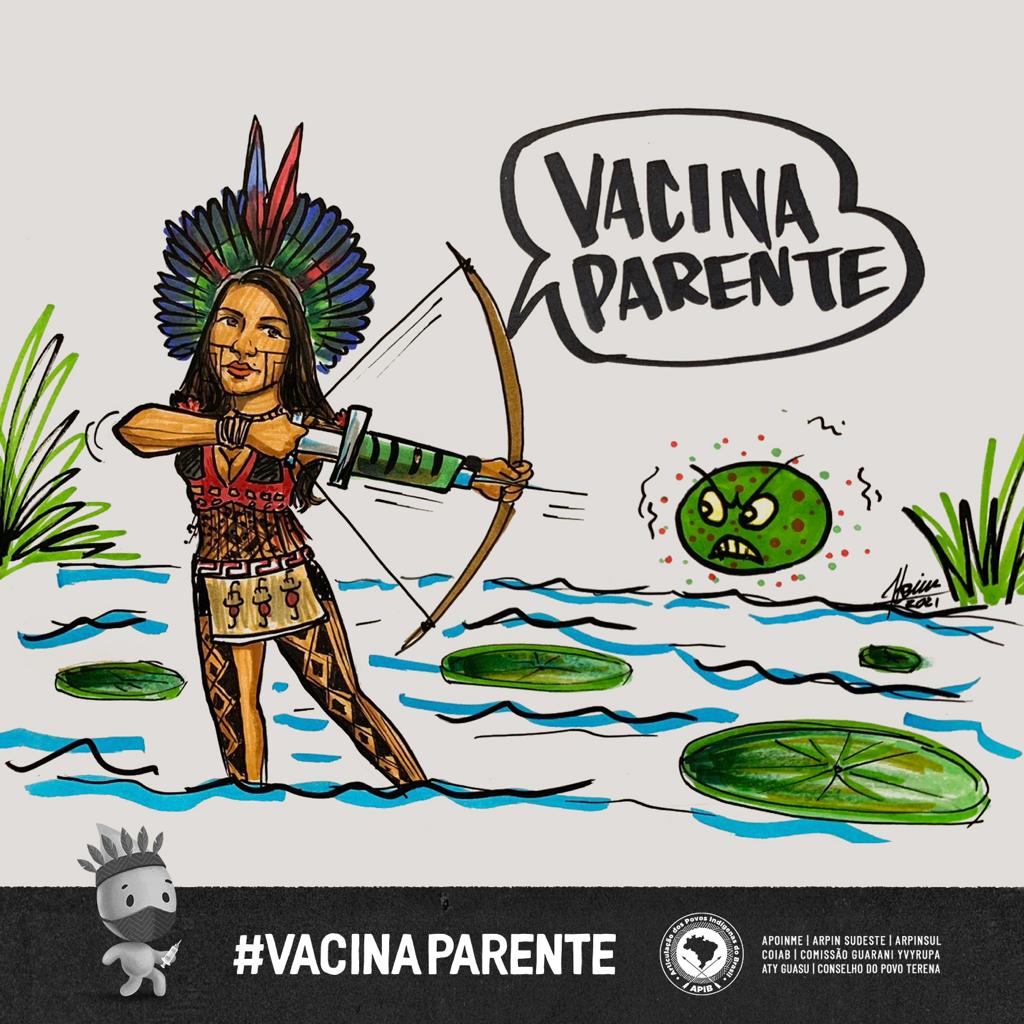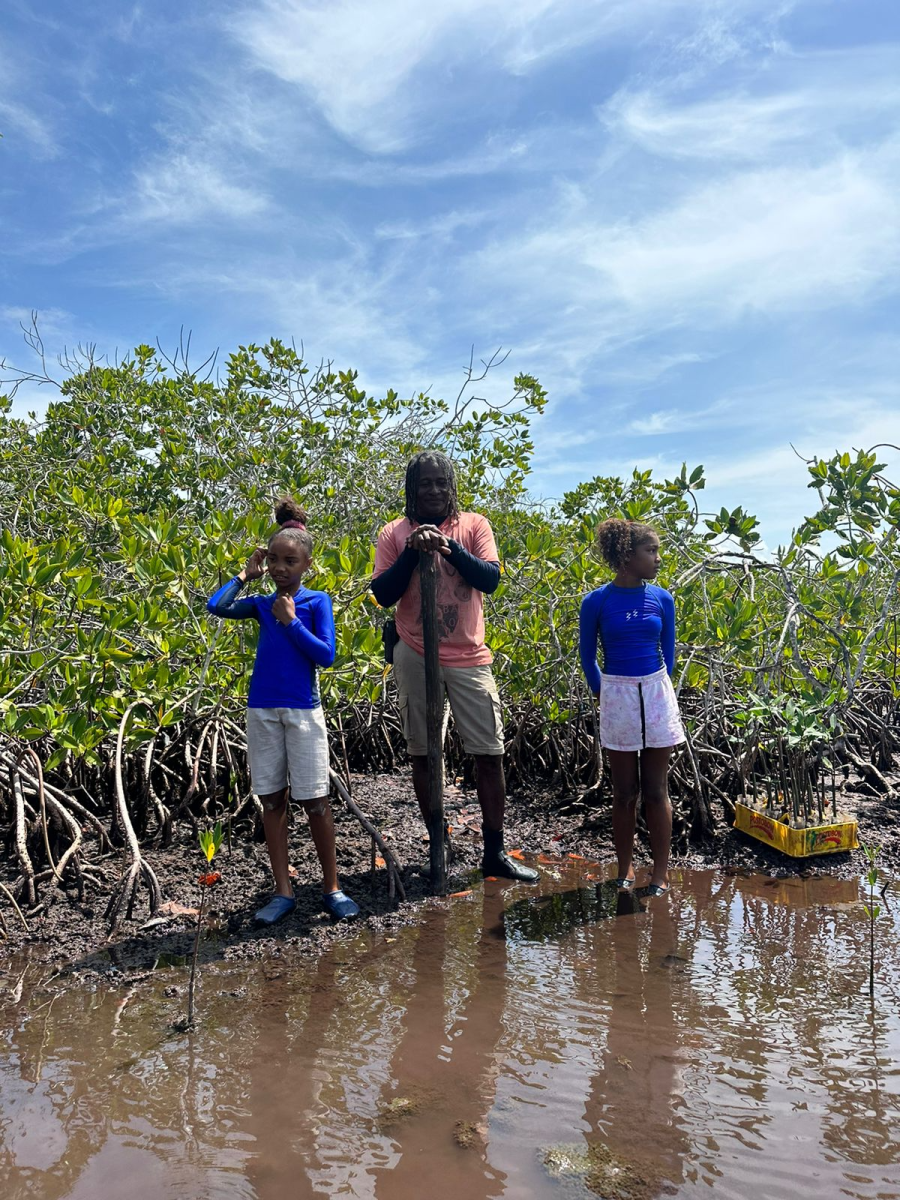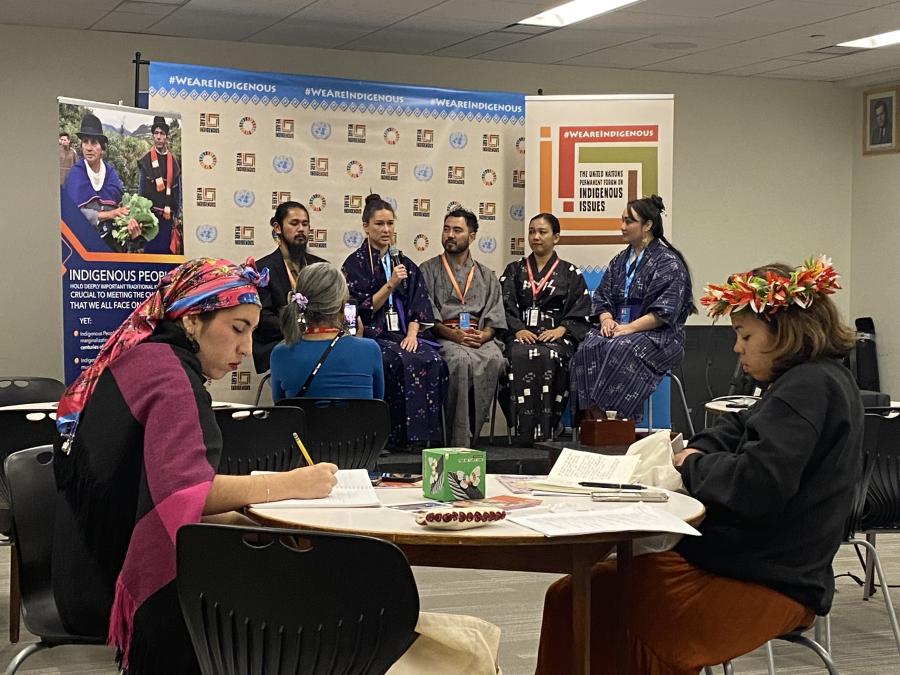
By Jess Cherofsky and Bia'ni Madsa' Juárez López (CS STAFF)
More than a year has passed since the beginning of the COVID-19 pandemic, which has resulted in upheaval to peoples’ lives globally. More than 2.7 million people have died and the global economic crisis has deepened. Indigenous Peoples have faced challenges based on their diverse situations and experiences. Subsequent waves of infections have been worse than the first in some Indigenous communities in terms of the number of deaths, and while it still has not been possible to account for all of the impacts over the first year, other issues continue to be added to the list of priorities to understand the course of the pandemic: new COVID-19 variants, reinfection, immunity, vaccines, and other data related to SARS-CoV-2. In this article, we will offer an overview of these issues framed through case studies of Indigenous Peoples around the world.
New Variants of SARS-CoV-2
As was to be expected given viruses’ capacity to mutate, new variants have appeared, with few extensively studied and described to date. It is not clear yet how many of the variants have significant health implications, but some have already resulted in both higher infection rates and higher mortality rates than the first. Variants like those from Brazil, South Africa, and the United Kingdom have been the most studied due to their impact.
In mid-2020, the first wave of infections reached the Ziora Amena community, located in Colombia on the border with Brazil and Peru, leaving almost all of the community’s 110 families infected. The arrival of that first wave meant very difficult weeks for the community, as they had neither tests, nor specialty hospital beds, nor sufficient medicine for the region. But 2021 started off even worse for this Muruy Indigenous community when the Brazil variant arrived, again infecting almost every community member, resulting in much worse symptoms, two deaths, and leaving the community incapacitated as far as its ability to sell its products and access food. In spite of the clear impacts in the region during the first wave, the Colombian government took no precautions and failed to increase medical capacity, all of which meant that when the second wave carried in the new variant, it found them in the same conditions as the previous had.
Reinfection and Immunity to COVID-19
The available information related to SARS-CoV-2 has been advancing throughout the pandemic. However, scientists continue to lack a complete understanding of how the virus behaves. Over time, the list of symptoms has changed, making diagnosis difficult in areas without access to tests and leaving an enormous number of cases unaccounted for. There is also no firm consensus on how long immunity lasts after a person is infected; the exact long-term consequences following infection are unknown; and without access to testing, it is not possible to know the true number of reinfections or whether they result from the same variant or not. This information is even more scarce in rural and Indigenous areas. Updated information in Indigenous languages is delayed in arriving, if it does at all, compared to the development and spread of the pandemic. The distribution of updated information about COVID-19 in Indigenous communities continues to be of utmost importance, and governments should act as such. The situation becomes even more complicated by the fact that, oftentimes, the information that does arrive in communities is false, which does not give communities the opportunity to make informed decisions.
Lack of Disaggregated Data for Indigenous Peoples
In June of 2020, Cultural Survival published an article about the lack of disaggregated data regarding COVID-19 in Indigenous communities. Since then, no country has yet correctly included in its official reports disaggregated data; the few that do record data by ethnic group compile the great diversity of Indigenous cultures into one category. It has been civil society organizations and communities themselves who have taken on this task. Maps like those of the Confederation of Indigenous Nationalities of the Equadorian Amazon (CONFENAIE), the National Indigenous Organization of Colombia (ONIC), and Indian Country Today have consistently gathered data, classifying it by Indigenous People. Also in June 2020, Cultural Survival undertook a global mapping project where data of COVID-19 cases continues to be collected, including subsequent deaths and cases of human rights violations in the context of COVID-19. To date, Cultural Survival has compiled information on at least 263 Indigenous Peoples in 28 countries have had cases of COVID-19 and 102 associated human rights violations against 88 Indigenous Peoples in 30 countries.
Successful Community Strategies in the Face of COVID-19
In the face of the pandemic, Indigenous communities have shown their capacity for resilience, implementing different measures to ensure the health of their populations. In many Indigenous communities, the communities have taken actions such as closing their borders, establishing COVID-19 checkpoints, canceling festivals and other big events, and establishing mask requirements to prevent the virus from entering their territories. As a result, one year into the pandemic, 82 communities in the state of Oaxaca, Mexico, find themselves completely free of COVID-19 cases. Importantly, these communities are majority Indigenous and operate according to collective self-government. In the Kuikuro community in Mato Grosso, Brazil, the community achieved zero mortality after improvising a hospital in their territory and hiring medical personnel to attend to people who had been infected with the virus. Also in Brazil, in December 2020, the Ashaninka People became the only Indigenous People without COVID-19 cases in the state of Acre after adopting strict isolation measures for nine months. These successes that emerge when Indigenous Peoples have autonomy demonstrate that the catastrophes that have occurred in Indigenous communities in many parts of the world throughout the pandemic are not inevitable. Rather, they are the result of structures of marginalization which deprive many Indigenous Peoples of the right to self-determination and empower the state as the sole decision-maker, many times without the involvement nor consent of Indigenous Peoples. Indigenous Peoples are capable of identifying and creatively developing responses and solutions, based on their own values and systems of organization which save lives.

Image courtesy of APIB.
Vaccination Among Indigenous Peoples
Indigenous Peoples have a diversity of perspectives on and experiences with vaccination. At the global level, there are cases of communities that accept the vaccine and those that don’t, communities that have had access and those that haven’t. There are also countries where Indigenous communities have been included as part of the vaccination plan and many places where Indigenous Peoples have taken advantage of their own collective systems and values to lead unique vaccination programs for their own communities. Several of these cases follow.
The development of COVID-19 vaccines has occurred at a historic rate, and around the world, to date, approximately 458 million doses have been administered. Although this is the “biggest vaccination campaign in history,” there are major inequalities in access to the vaccine. It is predicted that 90 percent of the residents of approximately 70 low-income countries will be unlikely to receive the vaccine in 2021. Meanwhile, wealthy countries have hoarded vaccines, an extreme example being Canada, which has bought enough doses for each resident to receive the vaccine five times. South African social justice activist and human rights lawyer Fatima Hassan has called this “vaccine apartheid.” According to Andrea Taylor, director of the Duke University Global Health Innovation Center, “While high-income countries represent only 16% of the world’s population, they currently hold 60% of the vaccines for COVID-19 that have been purchased so far.” Even within countries that have been able to access the vaccine, there are enormous gaps between who can access it and who cannot, with Indigenous, rural, and poor communities being among the most commonly left behind. On top of this, there is a lack of sufficient and culturally appropriate information which would permit Indigenous Peoples to make informed decisions related to the vaccine.
In Australia, Indigenous Peoples are included among the priority groups receiving the vaccine; community members age 55 and older are allowed to access the vaccine during the same phases as non-Indigenous people age 70 and older. This serves as a way of addressing historical inequities which make Indigenous Peoples disproportionately more vulnerable to the virus. It is a strategy being used as a reference in the struggle for vaccine equity in other communities, such as in Black communities in the U.S. who have also suffered socioeconomic and medical inequities that result in poorer health outcomes. Yet Australia’s Indigenous Peoples are also hesitant due to distrust and misinformation. “‘We’re quite early in the vaccination process – for obvious reasons,’ [said Dr. Tanya Schramm, a Palawa woman and Chair of the Expert Committee behind the COVID-19 clinical recommendations for Aboriginal and Torres Strait Islander people.]. ‘But because we’re getting it earlier than say the general population, there’s concern that there may be … a problem with it.’”
Limitations in Vaccine Access
The limitations in access to vaccines in Indigenous communities relate to factors such as the lack of infrastructure and communication. This is the case in communities on the margins of the city of Oaxaca, Mexico, where much of the Indigenous population lives. The vaccine requires advance online registration, to which elders generally cannot access due to lack of devices, internet, and familiarity with the technology. Also in Mexico, communities like Vista del Valle, largely comprised of Chatina and Zapotec people, there is no electricity, much less internet, nor are there many young people who could help elders navigate the vaccine registration system. This is not a unique situation that only affects a few people; to the contrary, only around half of homes in the community have cell phones or computers. In the case of this community, a 22-year-old Ayuuk woman, Adriana Kupijy Vargas, has organized to support her elderly neighbors to register; however, the structural problem that results in exclusion persists.
Meanwhile, the government of Tanzania, a country which has an Indigenous population of over half a million, has taken the unique unilateral decision to prohibit importation and registration of the vaccine entirely. They have argued that the nation “should stop living in fear and that they should trust in God and rely on traditional African remedies to prevent getting the virus, according to Catherine Kyobutungi, Executive of the African Population and Health Research Center. Kyobutungi explains that this leads to two great risks: that the uncontrolled transmission of the virus can lead to the development of new variants, and that, if just one country does not control the pandemic, the efforts of other countries cannot be successful due to the movement of people, especially between neighboring countries. However, Tanzanian authorities are pressuring doctors to treat patients as if they have pneumonia and other illnesses that are not COVID-19. Since the government stopped tracking COVID-19 infection data since May 2020, it is difficult to know the virus’s impact, much less its impact in Indigenous communities. To date, no testing has been reported in the country.
Rejection, Fear, and Distrust Regarding Vaccines
The doubts and fear that Indigenous Peoples in various parts of the world feel towards western institutions is founded on a long history of violence, “disinvestment, incompetence and brutality,” including the intentional propagation of diseases as an integral part of the genocide perpetrated by colonizers, cases of forced sterilization among Indigenous Peoples, and general practices and institutions that colonial governments have imposed upon Indigenous Peoples without their consent. Despite the fact that Indigenous Peoples in the US are being vaccinated at a higher rate than any other group, there continue to be doubts about vaccination. In the state of Nevada, the One Community campaign is involving leaders and community members from Indigenous, Black, Latinx, and other marginalized communities to “provide multilingual, culturally competent vaccine outreach to help keep Nevadans of color healthy.” They have identified distrust of government agencies as an obstacle to vaccination. Roxann McCoy, President of the National Association for the Advancement of Colored People (NAACP) says, ”It's really not just about the vaccine. We've seen police brutality. All those entities that are 'in authority' that are there to protect and serve have not equitably protected served and especially when it comes to the minority community.”
In some cases, fear and distrust is being imposed upon Indigenous Peoples systematically by external forces. In Brazil, evangelical groups, as well as President Jair Bolsonaro himself, who has constantly negated the truth of the pandemic which has killed more than 266,000 people in Brazil, are perpetuating “Fake News” about the dangers of the vaccine. “‘Fundamentalists and evangelical missionaries are preaching against the vaccine,’ says Dinamam Tuxá, a Tuxá leader of APIB, Brazil’s largest indigenous organization.” Leader Apuriña Claudemir da Silva says, “It’s not happening in all villages, just in those that have missionaries or evangelical chapels where pastors are convincing the people not to receive the vaccine, that they will turn into an alligator and other crazy ideas.” In response, some Indigenous Peoples in Brazil are launching local campaigns to combat this misinformation and educate their communities with the hashtag #vacinaparente. Many remote Peoples in Brazil have been heavily impacted by the pandemic, which has arrived to their communities via illegal miners operating in their territories throughout the pandemic. This has gone on in spite of major campaigns, such as that of the Yanomami in the Amazon, to expel the miners in accordance with Indigenous rights. Similar disinformation and religious campaigns have taken place in Chiapas, Mexico, one of the poorest states in Mexico with some of the greatest diversity of Indigenous cultures in Mexico. Forty-five communities in Chiapas decided in a community assembly that they would not permit any of their members to receive the COVID-19 vaccine. One community member explains that people believe that the vaccine, rather than preventing COVID-19, would cause infection. This distrust has also affected other medical campaigns; for example, it has resulted in rejecting fumigation for dengue-carrying mosquitoes because the community feared that fumigation would spread COVID-19.
Acceptation of the Vaccine
The Navajo Nation has seen 11 percent of their population of 170,000 people infected by COVID-19, and in the whole country Indigenous Peoples have the highest COVID-19 mortality rate. By mid-February 2021, “Indigenous Americans [had] the highest inoculation rate so far, with 11.6% (one in nine) already having received at least one dose.” Indigenous Nations had the option to receive the vaccine through state governments or through the Indian Health Service (IHS) at the federal level; many Indigenous Nations and Urban Indigenous Organizations have chosen the second option and many of them are “pleased with the distribution so far.” However, these national statistics do not reflect the reality of every person and community, and in some places, such as in Los Angeles County, the vaccination rate for Indigenous communities, as well as Black and Latinx communities, is lower than for the white population.
Many Indigenous Nations are designing and activating systems that accelerate vaccine distribution to protect their beloved members, above all their elders who are invaluable for the survival of their languages and cultures. The Cherokee Nation is putting elders “at the front of the line”; this follows their having lost, over the course of the pandemic, 35 of just 2,000 remaining fluent speakers of their language. Although Indigenous Peoples in the US have survived a long history of medical violence imposed by the colonizers, “a survey of 1,435 Native Americans [spearheaded by Abigail Echo-Hawk, Director of the Urban Indian Health Institute based in Seattle, WA] revealed that 75 percent would be willing to be vaccinated, not because they suddenly trust Uncle Sam, but because they put the ‘we’ ahead of the ‘me.’” Although a vast range of Indigenous perspectives towards the vaccine exists and each person and community will have their own opinion, the survey suggests that Native Americans are proportionately more willing to receive the vaccine than the general population, largely due to their commitment to collective wellbeing. Indigenous Nations are using community centers and other creative methods to educate and distribute the vaccine to their members, while directly addressing the historical trauma associated with the abuses of western medicine.
The pandemic in Indigenous communities globally has had a wide range of impacts, and thus it is necessary to evaluate the particularities of each Indigenous People to take action to reduce the pandemic’s impact. Cultural Survival demands that states provide culturally appropriate and updated information to Indigenous communities; generate disaggregated data; and respect Free, Prior and Informed Consent and the self-determination of Indigenous Peoples for all actions related to combatting the pandemic.
Photo courtesy of ARHI, India.



